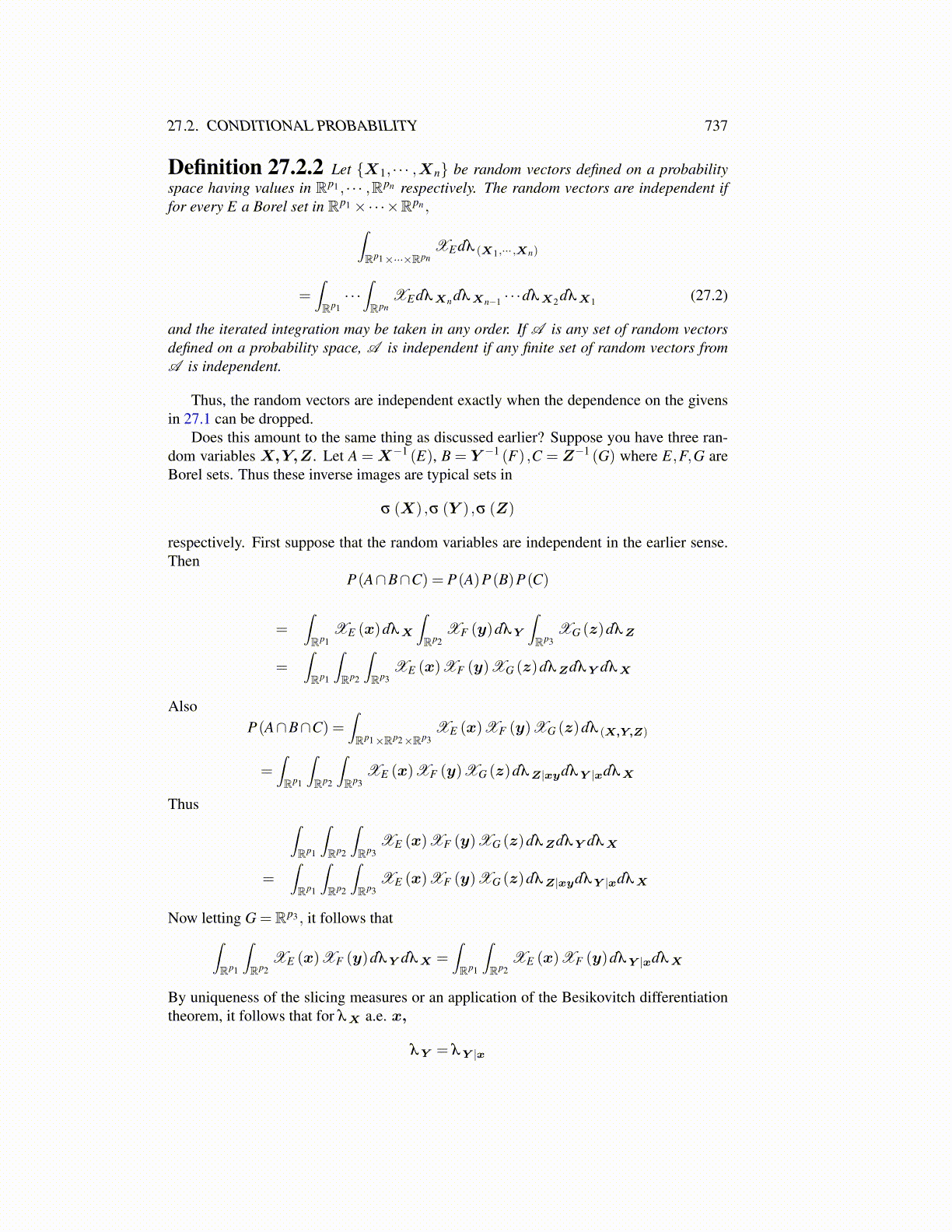
27.2. CONDITIONAL PROBABILITY 737
Definition 27.2.2 Let {X1, · · · ,Xn} be random vectors defined on a probabilityspace having values in Rp1 , · · · ,Rpn respectively. The random vectors are independent iffor every E a Borel set in Rp1 ×·· ·×Rpn ,∫
Rp1×···×RpnXEdλ (X1,··· ,Xn)
=∫Rp1· · ·∫Rpn
XEdλXndλXn−1 · · ·dλX2dλX1 (27.2)
and the iterated integration may be taken in any order. If A is any set of random vectorsdefined on a probability space, A is independent if any finite set of random vectors fromA is independent.
Thus, the random vectors are independent exactly when the dependence on the givensin 27.1 can be dropped.
Does this amount to the same thing as discussed earlier? Suppose you have three ran-dom variables X,Y,Z. Let A =X−1 (E), B = Y −1 (F) ,C = Z−1 (G) where E,F,G areBorel sets. Thus these inverse images are typical sets in
σ (X) ,σ (Y ) ,σ (Z)
respectively. First suppose that the random variables are independent in the earlier sense.Then
P(A∩B∩C) = P(A)P(B)P(C)
=∫Rp1
XE (x)dλX
∫Rp2
XF (y)dλY
∫Rp3
XG (z)dλZ
=∫Rp1
∫Rp2
∫Rp3
XE (x)XF (y)XG (z)dλZdλY dλX
AlsoP(A∩B∩C) =
∫Rp1×Rp2×Rp3
XE (x)XF (y)XG (z)dλ (X,Y,Z)
=∫Rp1
∫Rp2
∫Rp3
XE (x)XF (y)XG (z)dλZ|xydλY |xdλX
Thus ∫Rp1
∫Rp2
∫Rp3
XE (x)XF (y)XG (z)dλZdλY dλX
=∫Rp1
∫Rp2
∫Rp3
XE (x)XF (y)XG (z)dλZ|xydλY |xdλX
Now letting G = Rp3 , it follows that∫Rp1
∫Rp2
XE (x)XF (y)dλY dλX =∫Rp1
∫Rp2
XE (x)XF (y)dλY |xdλX
By uniqueness of the slicing measures or an application of the Besikovitch differentiationtheorem, it follows that for λX a.e. x,
λY = λY |x